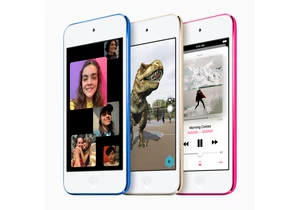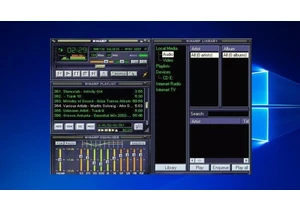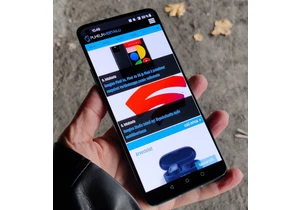Back in the day, OnePlus made its mark among tech enthusiasts by bringing high-end phone features to the mid-range price segment. It originally dubbed its phones as "flagship killers" and managed to do exactly that. However, as the competition has intensified, OnePlus has had to push its pricing up each year to maintain its position as a manufacturer with extremely fast Android phones.
This time around, OnePlus's main focus is on camera technology, as it has been widely regarded as the only area where the company's phones haven't been able to properly compete against the big guys like Samsung and Apple. To push its cameras to the next level, OnePlus has partnered with iconic Swedish camera brand, Hasselblad, and has also continued its on-going partnership with Sony to develop a custom imaging sensor for its flagship device.
We got the OnePlus 9 Pro for our review team well before its launch, so we had time to assess whether the company has finally managed to create a phone that is truly superb, in all areas possible.
Technical specs Look and feel Display Main cameras Sample photos Selfie camera Video recording Performance Wireless charging Battery life and charging Oxygen OS / Android 11 How to improve? Summary Rating
Tech specs Dimensions163,2mm x 73,6mm x 8,7mm Weight197 grams Display6,7" ; 20.1:9 ; 3216 x 1440px (525 ppi)120 Hz AMOLED LTPOGorilla Glass 5 SoCQualcomm Snapdragon 888 Memory8GB / 12GB Storage128GB / 256GB CamerasMain:48 MP ; OIS ; EIS ; f/1.8 ; Somy IMX789 Ultra-wide: 50 MP ; f/2.2 ; Sony IMX766 Tele: 8 MP Selfie camera16 MP, fixed focus Battery4'500 mAh OSAndroid 11 OtherDouble-SIM, 5G, 50W wireless charging, 65W wired charging
Look and feel When you buy a phone that costs approximately a thousand dollars, you're expecting to get a phone that has a certain build quality. OnePlus 9 Pro delivers on that expectation. The phone feels very sturdy and well-built, just as it should. It has this "premium feeling" when you hold the phone for the very first time in your hand.
Sure, the phone is also pretty heavy at 197 grams, making it a no-go for some people who prefer to have lighter phones to carry.
When you take a look at the phone, the first thing you notice is actually its back. The camera area hasn't been "hidden", but is displayed very prominently - and quite stylishly, in my opinion.
The front side is covered with a massive 6.7" display, just as one would expect. The front camera is a punch-hole camera, just a small hole in the front display in the top-left corner of the device.
Interestingly, OnePlus has opted to have a less curvy display design in OnePlus 9 Pro compared to its predecessor, the OnePlus 8 Pro. This was apparently done as a result of negative feedback about the curvy display, with complaints that such a display design caused constant accidental taps on the display itself.
Otherwise, the OnePlus 9 Pro is very much a OnePlus phone. The good old three-stage slider on the side of the phone is still there (that allows to quickly change the phone to vibrate or muted mode), accompanied by the power button. On the other side are located the physical volume controls.
At the bottom of the phone, you find the USB-C port, SIM tray, and stereo speakers. So, no 3.5mm headphone plug there. OnePlus 9 Pro has three color options available: Morning mist, Pine green and Stellar black. The device we tested was the "Morning mist" one, which is basically a silvery, almost mirror-like aesthetic.
The black option should be slightly matte, making it the go-to option for those who hate phones that are constantly covered with fingerprints.
Display OnePlus 9 Pro continues OnePlus's tradition of sporting great displays. It has a 6.7" AMOLED display with an adaptive 120 Hz screen refresh rate.
The new thing here is the LTPO technology that allows the display to be "smart" about the refresh rate. Basically, the phone changes its refresh rate from 1 Hz to 120 Hz depending on the material you're watching on your phone. If you're just browsing photos, the screen doesn't need to update as frequently as it would when you're playing fps-intensive games. A lower refresh rate means lower battery consumption too, of course.
In our tests, the dynamic refresh rate worked exactly as it should - there wasn't any lag when switching from photo browsing to fast games and back - the screen simply changed the refresh rate accordingly, without any hiccups.
For me personally, one of the key things with displays is the brightness. OnePlus 9 Pro has impressive 1300 nit brightness. With that level of brightness, the phone can be easily used even in direct sunlight.
OnePlus 9 Pro's display is simply put a very, very good display. It is responsive, fast, bright and it's color saturation is excellent.
Back cameras As OnePlus has made bold claims about the phone's camera abilities, this was a very interesting area to test. Sony has developed the IMX789 sensor just for this phone, bundling its photography know-how for OnePlus's new flagship.
The main camera can shoot 48MP photos and can also output 12-bit RAW images for those of you who prefer to do the image editing on your own, ignoring the phone's own algorithms. The 48MP photos are built by combining four 12MP images into one - a typical method seen in most high-end phones.
The main camera has an aperture of f/2.2 and has both, electronic image stabilizer (EIS) and a real, physical, optical image stabilizer (OIS).
Furthermore, the ultra-wide camera has seen some significant improvements, too, using Sony's IMX766 sensor. This sensor can be found on other phones, too, including the upcoming Oppo Find X3 Pro. The sensor delivers 50 MP ultra-wide shots with something OnePlus calls a "freeform lens". With a freeform lens, OnePlus is able to fix the typical edge distortions that are typically present in widescreen photos. As with the main camera, the 50MP image is built by stitching together four 12.5MP images.
Many higher-end phones nowadays tend not to include tele lens with the phone, but opt to have a macro lens with the phone instead. I've always personally preferred tele over the macro lens, as I feel that there are much more situations where I can use a tele lens than a macro lens. Obviously, this is, again, a matter of preference. But I was delighted that OnePlus decided to keep tele lens with their flagship phone.
Sure, the tele camera of OnePlus 9 Pro is probably the weakest link of its back camera arsenal. It shoots only 8 MP photos, using f/2.4 aperture. There's no OIS available for tele either.
But did OnePlus manage to create a camera setup that can truly compete against Samsung and Apple?
They did. Indeed.
Both, the main camera and the ultrawide camera take outstanding photos, no matter what lighting conditions there are available. The color balance is extremely realistic, resembling the photos taken with the best Sony's high-end camera phones.
As a nice extra touch, the color balance remains the same whether you take photos with the main camera or with the ultrawide lens - something that can't be taken for granted, not even with the most expensive phones nowadays. Apparently, this is the key area where Hasselblad collaboration has been in play.
Above, you can see a small comparison set of dimly lit photos. The first one was taken with mid-range Sony Xperia 10 II, with no flash in use. The second one was taken with OnePlus 9 Pro, using basic settings, no flash. The third one was taken with OnePlus 9 Pro, using night mode, with no flash. In low-light situations, even the ultra-wide camera delivers good results, although, not as impressive as the main camera.
Even though the phone doesn't sport a macro lens, software-based macro photography using existing lenses is still available as an option - and that works pretty well. Photos can be taken about 4 cm away from the object and they manage to maintain a pretty impressive amount of detail in them.
To summarize it: Yes, the OnePlus 9 Pro has an excellent camera.
Sample photos
Here are some comparison photos that were taken with all three cameras: ultrawide, main, and tele.
Front camera While OnePlus put significant effort into its back cameras, the selfie cam doesn't get any improvements. It still uses the same Sony IMX471 that company has used since the OnePlus 7 series. The selfie cam can take 16 MP photos, but doesn't have OIS and only has a fixed focus lens.
So, if you're an Instagram influencer whose main job is to take selfies, the OnePlus 9 Pro isn't your cup of tea perhaps. For everybody else, the front camera delivers okay-ish selfies in good light and adequate results in low light situations.
Video recording With OnePlus 9 Pro, OnePlus has jumped into the megapixel video game. The main camera can shoot 8K videos @ 30fps framerate. It is still a bit of mystery to me who actually needs 8K videos, as most people still don't have even 4K displays but for video editing, obviously, the better the source material, the better the end result.
In addition to 8K video, the phone can record 4K video @ 30/60/120fps and can also record slow-motion videos. For slow-motion, 1080p resolution can be captured up to 240fps framerate and 720p resolution can captured at 480fps.
Video quality is comparable to the quality of photos the OnePlus 9 Pro can take: when using the main camera, the quality is simply outstanding. When using the ultrawide lens, the quality is similarly superb in good light and "very good" in low light situations.
The selfie cam can only record FullHD video @ 30fps and doesn't have any other options.
Performance If there's one key area that OnePlus has never made any sacrifices, it must be the performance and this holds true with OnePlus 9 Pro too. The device uses Qualcomm's latest monster, Snapdragon 888 as its SoC. In plain English: the CPU of the phone is the fastest there is.
Various benchmarks prove the point. In AnTuTu test, the OnePlus 9 Pro was the third-fastest Android phone ever built, losing only to Xiaomi's latest flagship and to Chinese iQOOM's gaming phone.
If the SoC
Ak chcete pridať komentár, prihláste sa
Ostatné príspevky v tejto skupine

Sure, there were digital music players well before Apple introduced its first iPod back in 2001. But iPod was the device that made digital music a mainstream reality.
It also paved a way for new mus

After the initial developer edition, Google has now launched the first official beta version of Android 13 operating system.
While the developer edition, launched back in February, was meant for .. w

Sometimes history is shaped by small steps, leading into giant leaps. Those steps were taken in late 1990s by several tech companies - and as the result, the entire music business industry went throug

Google introduced a new measure for Android phones with its Android 12 operating system. The new measure, dubbed as Performance class indicates to app developers how good the phone is, performance-wis

Since late 2020, OnePlus has been struggling to push out its Android updates in timely manner, which has frustrated its loyal fans quite a lot. But finally, some relief is coming: Android 12 goodness

For recent years, Sony, has had a very limited selection of phones available globally. But even with a limited selection, company's track record for delivering Android updates hasn't been exactly a to


